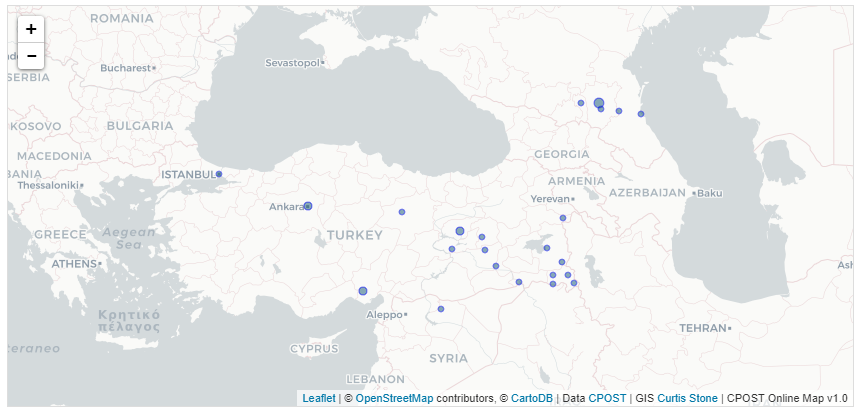The Kurdish Workers Party vs. The Chechen Separatists
The Kurdish Workers Party (PKK), which primarily operate out of Turkey, and The Chechen Separatists which are located in the Northern Caucasus Mountains of Russia are two terrorist organization that utilize suicide bombing as a tactic. Both groups are Islamic and operate in generally the same area of the world, they are geographically separated by approximately 400 miles. But, are these two terrorist groups similar in other ways? This paper will compare and contrast these two organizations to see if they target the same type of people, how effective their bombings are, what methods they utilize and what are their overall goals. To examine these questions, we will first need to establish some background on what the overall goals are and why each chose to utilize suicide bombing.
The Kurds, linked by language and ethnicity are sometimes described as the world’s largest population without a state. With over 30 million people that span 5 different countries, the Kurdish population seeks some level of autonomy. [1] The Kurdish Workers Party (PKK), founded in the late 1970s, has Marxist-Leninist Roots which originally sought an independent Kurdish State. Recently however, the PKK’s aim is to achieve some level of autonomy within Turkey. [2] [3]
The Chechen are primarily a Muslim ethnic minority that has sought some level of autonomy for over 200 years. Following the fall of the Soviet Union the Chechen separatist formed the Chechen All-National Congress that launched a coordinated campaign for independence that was moderately successful. The Chechen separatist achieved a de facto level of independence from 1996 – 2000 but following an invasion of neighboring Dagestan the Russian’s recaptured the capital of Grozny. [4]
Both groups have a history for agitating for freedoms and neither have had much success. The perceived success of the Hezbollah suicide bombing campaign in the early 1980s appears to have affected both groups as they have copied similar techniques. Both organizations have primarily utilized belt bombs with some limited use of car bombs. Relatively speaking, if the number of casualties equal success, the PKK has been ‘more successful’ achieving a fatality rate nearly twice as high and an injury rate nearly three times higher than the Chechens. [5] The PKK have also utilized the car bomb more effectively achieving a disproportionate number of fatalities per attack than the suicide belt. [6] In addition, the PKK have used confirmed female bombers more than 30 percent of the time with an unknown gender almost 50 percent. [7] The unknown gender of the attacker implies that there is potentially a resistance to claim the attack by naming the attacker or a limited use of suicide statements for propaganda. Both groups are similar in that they primarily target security forces. However, the Chechens have killed a disproportionately higher number of political targets. [8] The PKK has also shown a willingness to target and kill civilians. [9] These differences maybe because of the nature of the occupation each group faces. The PKK reside in an area that is considerably more mixed with Kurdish and Turkish ethnicities while the Chechens face more of a traditional occupation by Russian forces. These differences most likely explain the variance in target selection.
Source: Chicago Project on Security and Terrorism, http://cpostdata.uchicago.edu/search_results_new.php Council on Foreign Relations, https://www.cfr.org/backgrounder/chechen-terrorism-russia-chechnya-separatist BBC, https://www.bbc.com/news/world-europe-20971100
While the Kurdish Workers Party and the Chechen Separatist are both terrorist organizations located in relative in close proximity, utilize similar tactics and are agitating for some autonomy. They differ primarily in target selection and success in relation to the number of people killed per attack. The nature of the opposition forces appears to have affected the target selection for each organization. In addition, The PKK has shown a willingness to utilize female suicide bombers. It appears that the differences exhibited in each group are not necessarily rooted in ideology but more in opportunity with considerations given to the target audience of each organization

Figure 1: Map of Bombing LocationsSource: Chicago Project on Security and Terrorism, http://cpostdata.uchicago.edu/search_results_new.php

